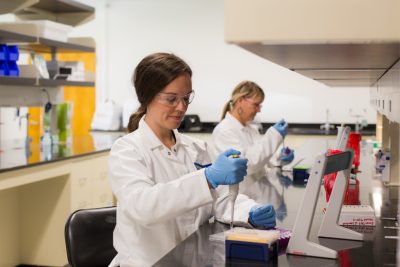Background: Best practice standards for measuring analyte levels in saliva recommend that all biospecimens be tested in replicate with mean concentrations used in statistical analyses. This approach prioritizes minimizing laboratory-based measurement error but, in the process, expends considerable resources. We explore the possibility that, due to advances in salivary assay precision, the contribution of laboratory-based measurement error in salivary analyte data is very small relative to more important and meaningful variability in analyte levels across biological replicates (i.e., between different specimens). To evaluate this possibility, we examine the utility of the repeatability intra-class correlation (rICC) as an additional index of salivary analyte data precision. Using randomly selected subsamples (Ns=200 and 60) of salivary analyte data collected as part of a larger epidemiologic study, we compute the rICCs for seven commonly assayed salivary measures in biobehavioral research – cortisol, alpha-amylase, c-reactive protein, interlekin-6, uric acid, secretory immunoglobulin A, and testosterone. We assess the sensitivity of rICC estimates to assay type and the unique distributions of the underlying analyte data. We also use simulations to examine the bias, precision, and coverage probability of rICC estimates calculated for small to large sample sizes. For each analyte, the rICCs revealed that less than 5% of variation in analyte levels was attributable to laboratory-based measurement error. rICC estimates were similar across all analytes despite differences in analyte levels, average intra-assay coefficients of variation, and in the distributional properties of the data. Guidelines for calculating rICC are provided to enable investigators and laboratory staff to apply this metric and more accurately quantify, and communicate, the magnitude of laboratory-based measurement error in their data. By helping investigators scale measurement error relative to more scientifically meaningful variability between biological replicates, the application of the rICC has the potential to influence research strategies and tactics such that resources (e.g., finances, effort, number/volume of biospecimens) are allocated more efficiently and effectively.
Associations Between Secretory Immunoglobulin A and Social Network Structure.
PURPOSE:
This study investigates the social determinants of health by examining how mucosal immunity is associated with the patterning of social connections in a network. Studies have suggested that social networks have biological underpinnings, but investigations at the scale of networks, rather than individuals, have remained elusive. We integrate salivary bioscience methods with advanced social network modeling to explore the association between salivary secretory immunoglobulin A (SIgA), a key component of mucosal immunity, and social network structure.
METHOD:
Friendship network data and saliva samples (later assayed for SIgA) were obtained from a large mixed-gender social organization (n = 155, 55% female, M age = 19.5 years).
RESULTS:
Exponential random graph modeling revealed that SIgA levels were positively associated with reporting more friendship ties with community members (i.e., social network activity), after controlling for other processes associated with network structure including preference to befriend others of the same age, gender, and extraversion, increased network popularity of agreeable individuals and those with lower levels of perceived stress, as well as network structural and organizational processes.
CONCLUSION:
By examining a wider range of associations between SIgA and network structure, we pinpoint that SIgA is positively associated with respondent’s sociability. Our findings are consistent with social integration theories linking social relationships to health and highlight the role of humoral immunity as a possible mediator of these associations.

